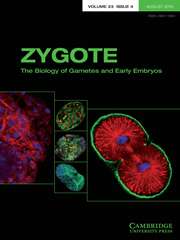Article contents
Screening the predictors for live birth failure in women after the first frozen embryo transfer based on the Lasso algorithm: a retrospective study
Published online by Cambridge University Press: 15 May 2023
Summary
This study aimed to screen factors related to live birth outcomes of women with first frozen embryo transfer (FET). The enrolled women were divided into training and validation cohorts. The least absolute shrinkage and selection operator (Lasso) regression algorithm of machine learning and the multiple regression model were then used to screen factors relevant to live birth failure (LBF) for the training dataset. A nomogram risk prediction model was established on the basis of the screened factors, and the consistency index (C-index) and calibration curve were derived for evaluating the model. The validation cohort was utilized to validate the nomogram model further. In total, 2083 women who accepted the first FET in our hospital were included and 44 factors were initially screened in this study. On the basis of the training cohort, the screened risk factors via multiple regression analysis with odds ratio (OR) values were female age (OR: 3.092, 95%CI: 1.065–4.852), body mass index (BMI; OR: 1.106, 95%CI: 1.015–1.546), caesarean section (OR: 1.909, 95%CI: 1.318–2.814), number of high-quality embryos (OR: 0.698, 95%CI: 0.599–0.812), and endometrial thickness (OR: 0.957, CI: 0.904–0.980). The nomogram model was generated based on five predictors. Furthermore, favourable results with C-indexes and calibration curves close to ideal curves indicated the accurate predictive ability of the nomogram. Female age, BMI, caesarean section, number of high-quality embryos, and endometrial thickness were independent predictors for LBF. The five factors of the risk assessment model may help to identify LBF with high accuracy in women who accept FET.
Information
- Type
- Research Article
- Information
- Copyright
- © The Author(s), 2023. Published by Cambridge University Press
References
- 1
- Cited by


